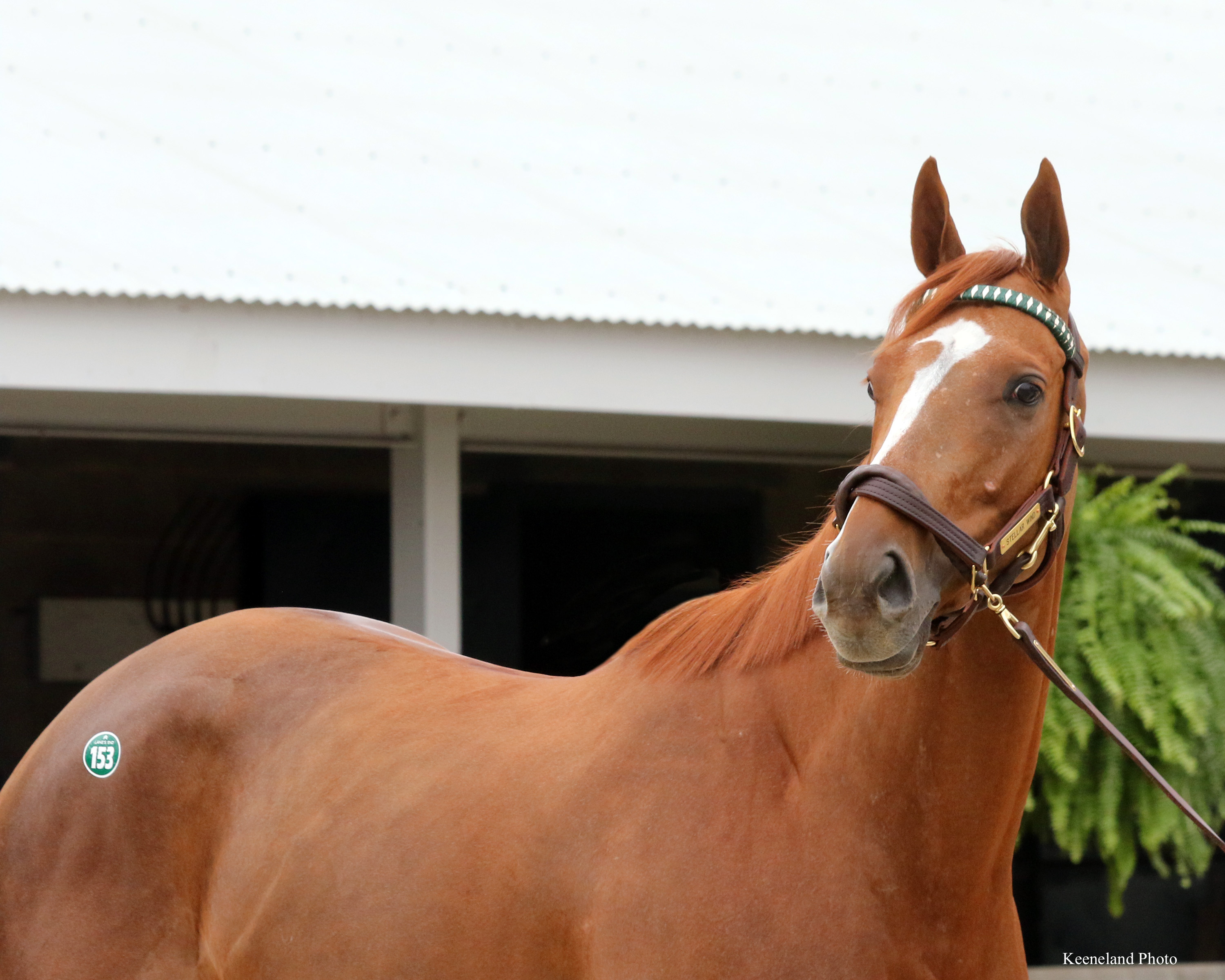The following piece is great new for Virginia breeding industry. It appeared in The Daily Racing Form March 13th and was written by Joe Nevills.
Virginia’s racing and breeding programs sit on opposite ends of the spectrum.
On one side, the Virginia-bred banner has flown proudly over champion Stellar Wind, who became an Eclipse Award winner on the track and topped last year’s Keeneland November breeding stock sale with a $6 million price tag. On the other, the state has been without a significant live meet since Colonial Downs closed its doors in 2014.
The status of the state’s racing program is uncertain, but interest in Virginia-breds at auction remains strong thanks in part to the Virginia Thoroughbred Association’s ability to adapt to its surroundings.
:: Get breeding & sales news, Beyer info, and more delivered right to your email!
Virginia saw the largest actual-dollar increase by average yearling sale price from 2016 to 2017 among all states with 10 or more sold last year. The state spiked by $30,091, with 45 horses bringing an average price of $94,316 last year, improving from 2016 when 55 horses averaged $64,335. That marked a 47 percent increase in average from year to year from 18 percent fewer horses sold.
The average price for a Virginia-bred last year was the highest since 2012, when 80 horses averaged $104,162. It was the fourth-highest average for the state over the past 20 years.
Nationally, the average sale price for a Virginia-bred last year trailed only Kentucky at $96,483 from 3,983 sold.
:: DRF BREEDING LIVE: Real-time coverage of breeding and sales
Debbie Easter, executive director of the Virginia Thoroughbred Association, said part of the state’s continued commercial interest is institutional, with some farms that were prominent when Colonial Downs was still in business continuing to breed their quality mares to compete in other states.
The other part is the Virginia-bred owners bonus program. With no in-state-option, Virginia expanded its boundaries in 2016 to provide owners of Virginia-breds a 25 percent bonus on purse earnings in non-Virginia-restricted races in New York, New Jersey, Pennsylvania, Delaware, West Virginia, and Maryland.
“I certainly think that has quite a bit of value,” Easter said. “I don’t know that we’re ever going to be able to quantify it, but I know the guys that were selling them last summer told me that when people came to look at those horses, it was definitely something positive they could market.
Among the highlights for Virginia-bred yearlings at auction last year was a Scat Daddy filly bred by Audley Farm Equine in Berryville, Va., who sold to White Birch Farm for $600,000 at the Fasig-Tipton Saratoga select yearling sale.
Of the 12 states that had 10 to 79 yearlings sell at auction in 2017, nine saw an increased average sale price.
Second among the group of smaller states by average price growth was Arkansas, which saw its price jump $20,276 last year to $28,393 from 14 sold.
West Virginia came next, with its 19 yearlings sold averaging $45,121, making for a growth of $9,721.
Other small-market states seeing improved yearling averages in 2017 included Iowa (up $7,198), Indiana (up $7,028), Minnesota (up $6,948), Illinois (up $3,229), Colorado (up $1,621), and Texas (up $660).
Three states finished with lower yearling averages last year, with the biggest drop coming for Ohio-breds.
The average price for an Ohio-bred fell $5,298 from year-to-year, finishing at $19,154 from 69 horses sold after landing at $24,452 from 63 sold in 2016. It was the state’s lowest average yearling price since 2010.
One factor affecting the drop could be the introduction of the Ohio Thoroughbred Breeders and Owners Association’s fall mixed sale last year.
Revived after over a decade of dormancy, the auction introduced a group of offerings to the commercial market that might have otherwise changed hands privately or been kept to race as homebreds, with many selling at prices lower than one typically sees at the auction outlets in Kentucky. Marketing to a regional buying bench for the first time in a while, a drop in average would be expected, and is not necessarily an indictment on overall buyer interest in Ohio-bred yearlings.
Other small-market states seeing a drop in year-to-year average in 2017 were Arizona (down $1,369) and Washington (down $3,157).


